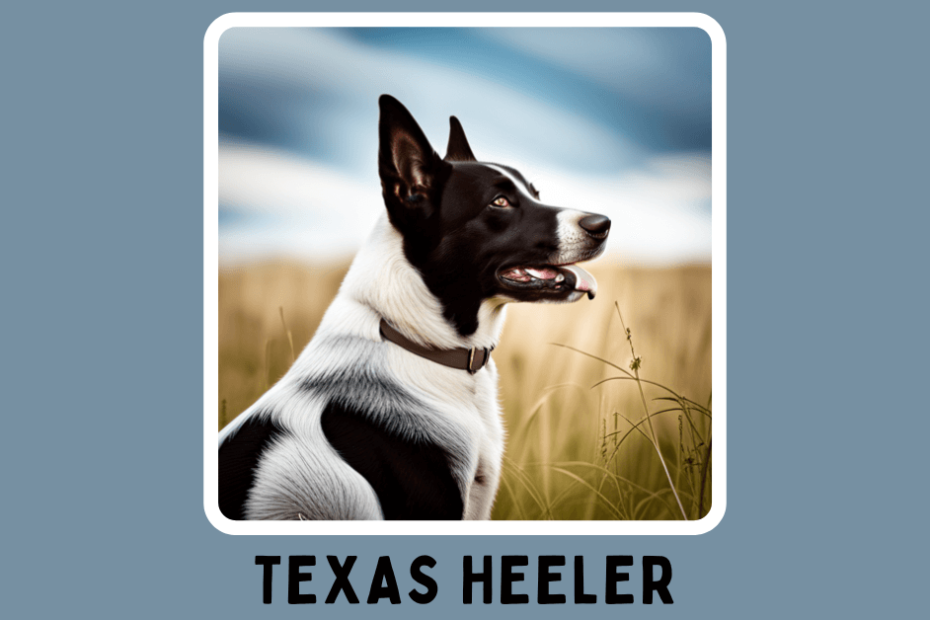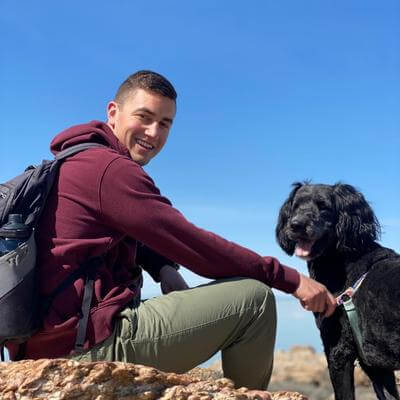I always love finding out about new dog breeds and mixes. Recently, I came across a fantastic mixed breed known as the Texas Heeler.
These dynamic dogs are a mix of two popular herding breeds, the Australian Cattle Dog and the Australian Shepherd.
Eager to learn more about this unique breed, I dove headfirst into the world of the Texas Heeler!
This comprehensive breed guide will undoubtedly be valuable if you share my curiosity about the Texas Heeler breed.
I will cover everything from breed history to temperament. And everything in between!
Ready? Let’s get started.
What is a Texas Heeler?
A Texas Heeler is a mix between an Australian Shepherd and an Australian Cattle Dog. This medium-sized, athletic breed originated in the 1970s. They quickly gained popularity as working dogs in Texas farms and ranches due to their remarkable work ethic and dedication. They are cherished for their exceptional herding skills and charismatic personality.
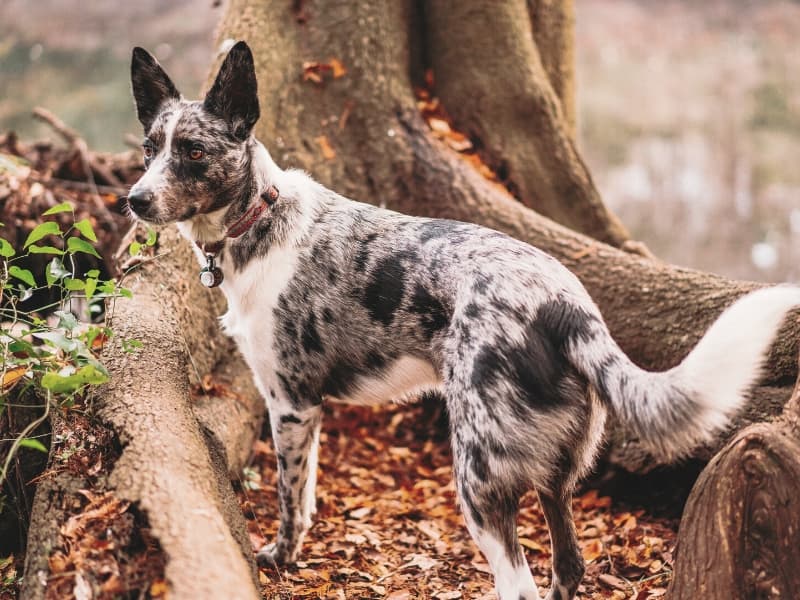
Their name originates from the Australian Cattle Dog’s nickname, “Heeler.”
They got this nickname because of their herding technique involving nipping at the cattle’s heels to direct their movement.
In the next section, you’ll see where the ‘Texas’ part of the Texas Heeler’s name comes from.
Fun Fact: In the popular video game series Far Cry, a dog named Boomer is featured as a character. Many speculate that Boomer is a Texas Heeler because he is an Australian Shepherd-Cattle dog mix.
Texas Heeler History
These beautiful designer dogs, known for their working abilities and intelligence, originates in the heart of Texas.
The Texas Heeler came into existence from the need to create the ultimate herding dog.
Both the Australian Shepherd and Australian Cattle Dog are excellent herders. So, why not mix the two?
I don’t know for sure, but this seems likely the driving force behind the Texas Heeler.
As a hybrid dog, you get the best traits from each parent breed and lessen the risk of inheriting breed-specific diseases.
The exact history of the Texas Heeler isn’t precisely known. But in May 1970, a woman named Lucy Guynes put Texas Heeler dogs on the map by registering the breed with the Animal Research Foundation.
After that, it didn’t take long for Texas farmers and ranchers to fall in love with these dogs’ excellent herding skills, and their popularity took off.
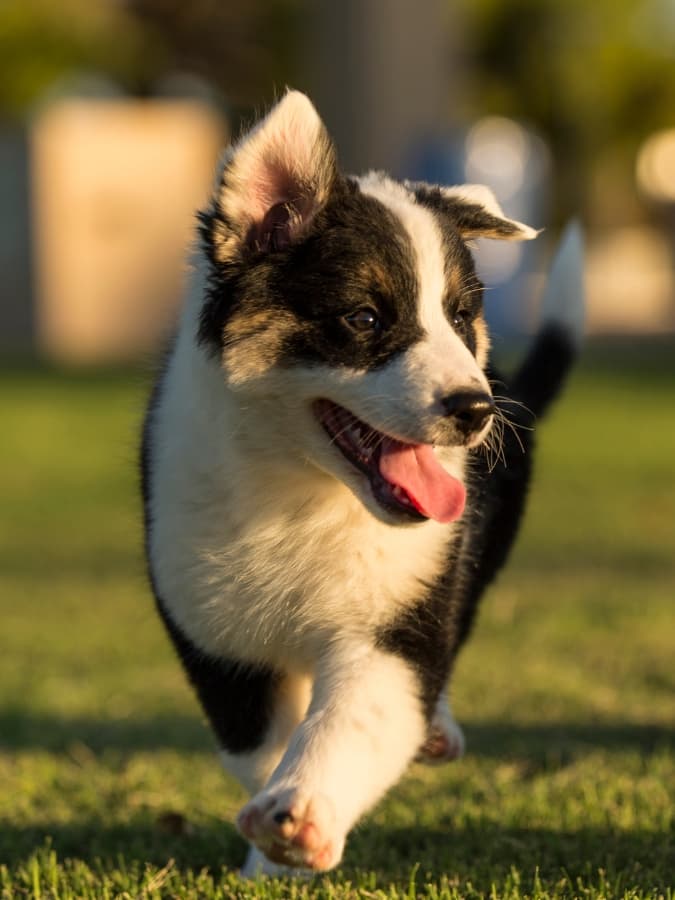
With its Australian Shepherd and Australian Cattle Dog lineage, it’s no surprise that the Texas Heeler excels in herding cattle and sheep.
Due to their parent breeds’ popularity in the southern United States, the Texas Heeler has also become an all-time favorite for families in that region.
Oh, and of course, they’re pretty popular in the state of Texas…hence the name.
The Texas Heeler is an excellent working dog and has proven to be a joyful and loyal companion for many dog owners worldwide.
History of the Parent Breeds
The best way to get to know a dog is to meet its parents.
Getting to know the Australian Cattle Dog and Australian Shepherd gives us a better idea of what makes the Texas Heeler such an incredible mix.
Australian Cattle Dog
The Australian Cattle Dog, or ACD, originated in the 1800s.
Australian settlers required a hardy and intelligent dog breed to control and drive cattle across large expanses of terrain.
The breed descended from crossing Dingoes – wild dogs native to Australia – with various imported British herding breeds, such as Collies.
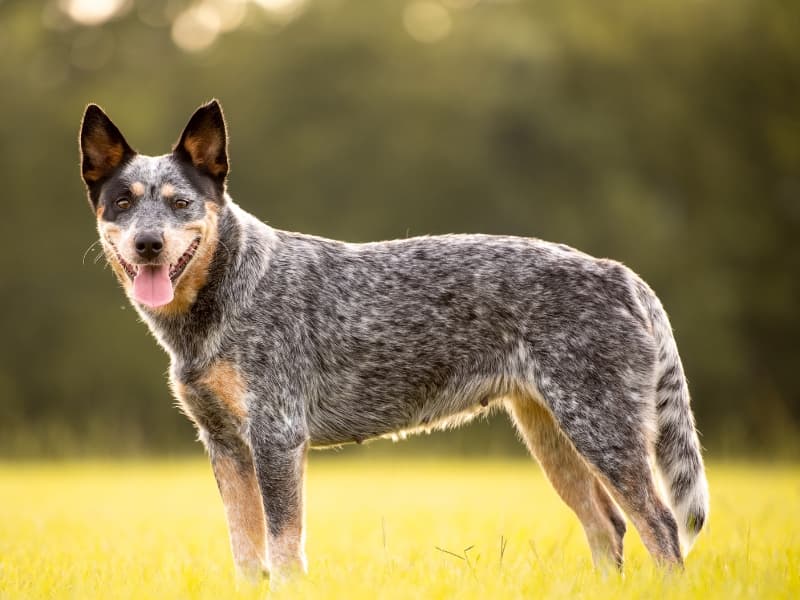
The Australian Cattle Dog is also known as the Blue Heeler, Red Heeler, or Queensland Heeler.
One of the fascinating aspects of the Australian Cattle Dog is its unique blend of tenacity, endurance, and intelligence.
Through selective breeding, the breed developed a strong herding instinct and a compact yet muscular body.
The Blue Heeler became an indispensable asset to farmers and ranchers, capable of driving cattle over rugged, inhospitable terrain.
These incredibly smart dogs also have a distinctive appearance, with coats ranging from blue to red speckles.
They are active dogs. Their energy levels are impressively high, which makes them the perfect breed for long days of intense work.
The breed was officially recognized by the American Kennel Club in 1980.
Today, they are still used as herders but also as companion dogs.
Australian Shepherd
Contrary to their name, the Australian Shepherd did not actually originate in Australia but instead in the United States.
Their history dates back to the 19th century when Basque shepherds emigrated to America and brought their herding dogs.
These shepherds often found work in Australia before finally settling in California, hence the breed’s name.
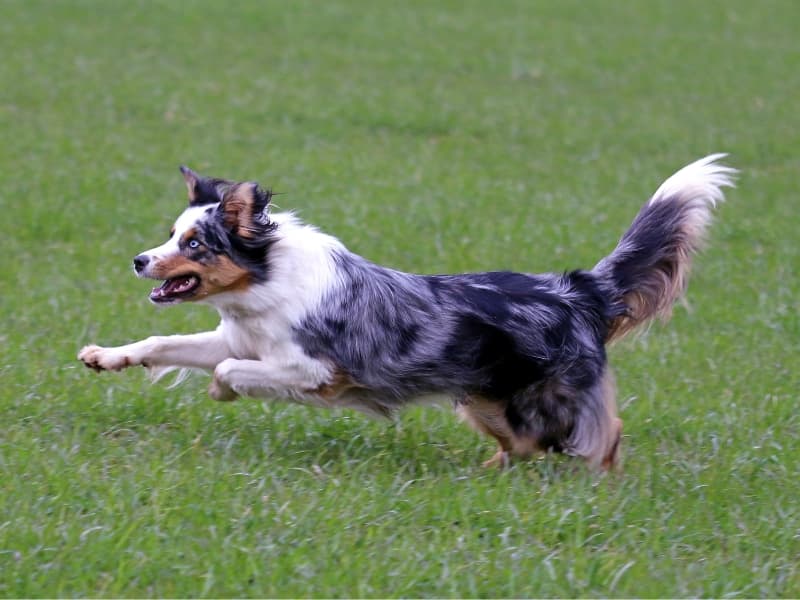
The Australian Shepherd dog developed from a mix of different herding breeds, including the Border Collie.
As an intelligent and energetic breed, Aussies excelled in cattle and sheep herding, alongside participating in various dog sports and activities.
Known for their striking multi-colored coats and different-colored eyes, the breed has become popular for their excellent looks and impressive work ethic.
Throughout the years, these two exceptional parent breeds have formed the backbone of the captivating Texas Heeler.
Combining their intelligence, endurance, herding instincts, and striking coats, this hybrid breed has gained the admiration of dog lovers everywhere, including me, and rightfully so.
Aussie’s intelligence and adorable looks make them a popular candidate for mixed breeds.
Generations (F1, F2, etc.)
It’s important to understand generations when discussing a mixed dog breed’s size, temperament, etc.
Since Texas Heelers are not purebred, there aren’t any governing breeding regulations that define the breed.
This means two dogs can be called a Texas Heeler but have vastly different characteristics and appearances.
These differences can be attributed to the dog’s generation. Generations are defined by the letter F which stands for filial.
First generation (F1)
A first generation, or F1, Texas Heeler will have one purebred Australian Shepherd parent and one purebred Australian Cattle Dog parent.
F1 Texas Heeler = Australian Shepherd x Australian Cattle Dog
No rule defines the gender of the parent. For example, the Australian Shepherd may be the sire (father) or dam (mother) and vice versa.
Since both parents are purebred dogs, it becomes significantly more straightforward to anticipate the features and looks of their puppies.
Second generation (F2)
An F2 Texas Heeler will have two F1 Texas Heeler parents.
F2 Texas Heeler = F1 Texas Heeler x F1 Texas Heeler
Multigenerational (F3, etc.)
Third generation and beyond is typically referred to as multigeneration or multi-gen.
There is a lot of variability in multigenerational Texas Heelers. Here are a few possibilities:
F1 Texas Heeler x F2 Texas Heeler: In this pairing, an F1 (first generation) Texas Heeler (Australian Shepherd x Australian Cattle Dog) is bred with an F2 (second generation) Texas Heeler (F1 Texas Heeler x F1 Texas Heeler).
F2 Texas Heeler x F2 Texas Heeler: Two F2 Texas Heelers are bred together in this combination.
F1 Texas Heeler x F3 Texas Heeler: An F1 Texas Heeler is bred with an F3 Texas Heeler.
F2 Texas Heeler x F3 Texas Heeler: An F2 Texas Heeler is bred with an F3 Texas Heeler.
F3 Texas Heeler x F3 Texas Heeler: Two F3 Texas Heelers are bred together.
The outcomes can be quite diverse due to the genetic variability present in crossbred dogs.
Multigens might show a broad range of traits from the Australian Cattle Dog and the Australian Shepherd breeds, and considerable variability might exist even within the same litter.
Physical Characteristics
Generally, Texas Heelers are medium-sized dogs. As mentioned in the previous section, their adult size depends on their generation.
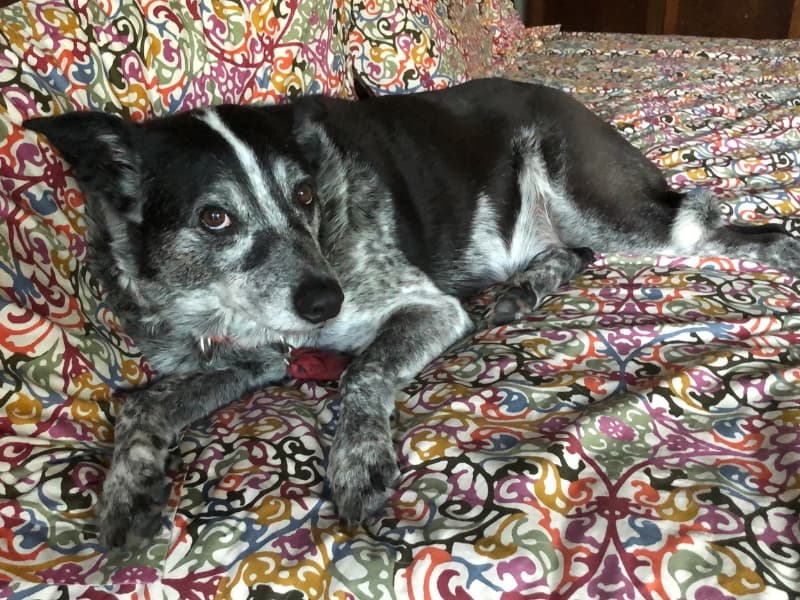
Their generation is dependent on their parents. Therefore, the best measure of how big a Texas Heeler will get is the size of the litter’s parents.
The following sections will assume we’re talking about a first-generation Texas Heeler.
Height
Male Texas Heelers typically stand at an average height of 19 to 22 inches, while females tend to be slightly shorter, with an average height ranging from 17 to 20 inches.
Their height offers a perfect blend of agility and power, making them an ideal companion for strenuous activities such as herding.
Weight
The weight of Texas Heelers typically ranges between 40 to 55 pounds for males and 35-50 pounds for females.
It’s worth pointing out that weight can vary drastically between dogs.
Lifestyle, age, and exercise heavily influence a dog’s size (no pun intended).
Coat Type
Their short to medium-length fur is smooth and soft.
Texas Heelers typically have a double-layer coat that requires weekly brushing to keep it looking its best and to manage shedding.
Like both parent breeds, Texas Heelers might go through shedding seasons where more frequent brushing will be necessary, possibly every two or three days.
Coat Colors
One of the most striking features of Texas Heelers is their coat color.
I love the unique and diverse coat colors of Texas Heelers.
They come in a variety of colors, including:
- Black
- Blue merle
- Red
- Red merle
- Black and white
- White
- Brown
- Tan
A common but unique coloring can be the blue or red merle pattern, like an intricate tapestry of different shades.
Another fascinating aspect is their potential for white or tan trim on their feet and legs, adding an extra layer of charm to their already captivating appearance.
Lastly, they can have speckling and mottling similar to Australian Cattle Dogs.
Traits & Characteristics
The following infographic breaks down the different traits and characteristics of a Texas Heeler.

Temperament
Texas Heelers usually exhibit a blend of traits from both parent breeds.
As such, they tend to be loyal, intelligent, and alert, often showing a bit of wariness around strangers, similar to the ACD.
Texas Heelers are also known to be active, friendly, and easy-going, much like the Aussie, making them great companions for families and excellent playmates for children.
Being the offspring of two working breeds, Texas Heelers inherit significant energy and require regular physical activity and mental stimulation to stay happy and well-behaved.
Without adequate exercise or work, they can become bored and potentially mischievous.
They are often eager to please, and thanks to their intelligence, they are generally easy to train, much like their Aussie parent.
Overall, the temperament of a Texas Heeler can be described as slightly reserved yet friendly, with a strong desire to work or engage in regular exercise.
However, like all mixed breeds, individual temperaments can vary, and a Texas Heeler might lean more toward one parent breed than the other.
Are they aggressive?
In general, they are not aggressive dogs. I’ve found that when socialized properly, they are receptive to meeting new people and even other animals.
Despite their tendency to not be aggressive, dogs may exhibit aggression for various reasons. These could be due to fear, anxiety, territorial instincts, or pain or discomfort.
It’s also important to remember that aggression is often a sign of an underlying issue, such as fear, anxiety, or discomfort, and not a character flaw in the dog.
With the right approach and treatment, most forms of aggression in dogs can be managed or even resolved.
What owners have to say
I don’t own a Texas Heeler. But I know a few people that do…
Okay, I just found many Texas Heeler owners across the internet. I think it’s important to hear from actual owners.
The following quotes are what different Texas Heeler owners have to say about the breed:
“My first dog is a Texas Heeler! He is a rescue so I don’t know what went into his upbringing, but he is an angel — he’s the perfect balance of smart and sweet. He really wants to please and as a first-time owner this worked in my favor as I learn how to train him. As others have mentioned, consistency and routine are key, otherwise he can grumble a little.”
Source: Reddit
“I have a 1.5 yr old ACD rescue; she’s very energetic when she’s up, but during the day when I work at home she’ll spend hours laying next to me and then get up to follow me from room to room.”
Source: Reddit
“Our TX Heeler is super hard working and is amazingly versatile. As long as she gets a lot of exercise and playing in the woods she also will spend the day snuggled up on the couch”
Source: YouTube
Health Issues
In this section, we’ll cover their lifespan and some common health concerns to be aware of.
Like any other breed, I’ve learned that Texas Heelers can have a few potential health issues.
Thankfully, they’re generally a healthy and hardy breed!
Texas Heelers can develop a few health issues despite their overall good health. I want to share some of the most common health problems:
- Hip and Elbow Dysplasia: As with their parent breeds, Texas Heelers may be prone to developing elbow or hip dysplasia. Regular vet check-ups can undoubtedly help detect this issue early on.
- Eye Issues: Texas Heelers might inherit certain eye conditions from parent breeds, like Progressive Retinal Atrophy. It’s important to watch for any changes in their eyes and consult a veterinarian if you notice any issues.
- Deafness: Some Texas Heelers might experience congenital deafness, which may stem from genetics. If you suspect any hearing issues in your Texas Heeler, it’s crucial to seek professional advice.
- Ear Infections: Both its parents are prone to having excessive wax and dirt buildup in their ears. If unchecked, this can lead to infections, so keep your Texas Heeler’s ears squeaky clean!
Remember, regular vet check-ups and a healthy lifestyle go a long way to keeping a Texas Heeler in tip-top shape.
Lifespan
The lifespan of a Texas Heeler can range from 12 to 15 years, which is pretty impressive!
Keeping them healthy and happy with proper exercise, nutrition, and veterinary care is essential to ensure they live long and fulfilling life.
Do Texas Heelers shed?
From what I’ve learned, Texas Heelers are indeed moderate shedders. But their double coat usually doesn’t create too much of a mess around the house.
While they may need seasonal blowouts, they don’t require frequent trips to a professional groomer like other dog breeds.
So, even though you’ll have to deal with some hair getting stuck to your shirt, you won’t have to pay the hefty fee for a professional clip every few weeks.
Are they hypoallergenic?
Now, you might be wondering if Texas Heelers are hypoallergenic. Unfortunately, they aren’t the best choice for dog allergy sufferers.
However, there are some ways to manage shedding and keep your home relatively fur-free:
- Grooming: A good brush before their bath will help loosen up hair and reduce shedding. Regular brushing can also help keep their coat healthy and minimize fur in the house.
- Vacuuming: Investing in a good vacuum designed to deal with pet hair can be a lifesaver for managing shed fur around the home.
- Proper nutrition: Ensuring your Texas Heeler has a well-balanced diet can contribute to a healthier coat, which can help reduce shed hair.
Looking at the bright side, in addition to being moderate shedders, Texas Heelers are also considered “low-maintenance” dogs regarding grooming requirements.
Their short hair means they don’t need regular visits to the groomer, making them an even more delightful breed to have around!
So, while Texas Heelers do shed, it’s not an extreme amount, nor should it deter you from considering this intelligent and energetic breed as a potential companion.
Just remember to brush them regularly, vacuum, and provide them with a nutritious diet to manage their shedding, and you’ll have a happy, healthy pup by your side!
How much do they cost?
The price of a Texas Heeler puppy can vary greatly depending on factors such as the breeder, location, and lineage of the puppy. On average, they tend to cost around $400 to $1,000.
It’s not unusual for some pups with top-of-the-line pedigrees to fetch higher prices, even up to $2,000 or more.
When looking for a Texas Heeler, always remember that the best breeders put effort into ensuring the health and quality of their puppies.
My research suggests that reputable breeders will provide health clearances and guarantee the puppy’s well-being.
So, while it might be tempting to go for a cheaper option, investing in a healthy dog from a reliable breeder is always worthwhile.
Remember, the initial cost of purchasing a Texas Heeler is only part of the financial commitment.
You’ll also need to consider ongoing costs like:
- Essential items (crate, bed, leash, collar, etc.): $100 to $300. The cost can be higher for premium items.
- Annual food costs: $500 to $1,500. This depends on the size of the dog and the type of food you purchase.
- Regular vet checkups: $100 to $300 per visit. This can vary based on location and the specific services provided.
- Vaccinations: $75 to $150 annually. Some vaccinations are given every three years after the initial series.
- Heartworm prevention: $100 to $200 annually. This is critical for dogs in most areas.
- Flea and tick prevention: $150 to $300 annually. This can depend on the product used and the size of the dog.
- Dog Insurance: $200 to $600 per year. This is optional but can provide coverage for accidents or illnesses.
- Toys and miscellaneous Expenses: $50 to $200. This includes toys, treats, and any other non-necessity items for the dog
- Training classes or resources: $50 to $300. This could be higher if you hire a professional trainer.
As a dog owner, I advise researching the breed thoroughly and preparing for the ongoing costs to provide your Texas Heeler with the best life possible.
Are they good family dogs?
Texas Heelers can make excellent family dogs! But they’re not for every family.
Texas Heelers require a lot of stimulation and exercise since they are a mix of two very active dog breeds.
Additionally, Texas Heelers are herders. Herding dogs can sometimes “herd” children, especially if young kids are running around outside in the yard.
This I know from personal experience. My neighbor’s Border Collie would try to herd us whenever we would play in the backyard.
However, this is not a deal breaker because Texas Heelers are highly trainable. They can be trained not to nip or herd at children.
With their hard-working nature, these intelligent dogs also excel in canine sports and have the potential to be service dogs if adequately trained.
They are also highly adaptable.
Though they might not be ideal for apartment dwellers due to their high energy, Texas Heelers can quickly adjust to diverse households, such as families with older children, singles, or farmers and ranchers.
Early socialization is key to ensuring they’re comfortable in different environments!
Texas Heelers have won me with their intelligence, friendliness, and hard-working nature.
Providing them with the proper socialization, obedience training, and meeting their physical needs will guarantee you a fantastic family dog!
Final Thoughts
In the realm of designer breeds, the Texas Heeler stands out with its high intelligence and vibrant energy, making it an active breed well-suited for dynamic households.
These pups aren’t just great dogs; they’re family members, partners in an adventure at the dog park, and affectionate companions for young children.
The Texas Heeler puppies, with their twinkling eyes and wagging tails, are simply irresistible.
Remember, though, while they are small enough to fit into most families at a young age, proper care is paramount, especially given the active nature of this breed.
The Texas Heeler size grows to a manageable medium, but don’t be fooled; these high-energy dogs require plenty of exercise and mental stimulation.
They are not just energetic dogs; they’re little powerhouses!
Positive reinforcement from a young age works wonders in shaping the behavior of this mixed breed dog, making them an excellent choice for families with small children.
A trip to the dog park or a game of fetch in your backyard could be a good idea to keep them engaged and happy. They’re great family dogs, incredibly smart, and capable of learning a lot.
Remember, while Texas Heelers are generally healthy, like any breed, they can be prone to certain health conditions.
Therefore, regular check-ups with your vet are essential.
So, if you are ready to be active owners and are looking for an intelligent, lively addition to your family, the Texas Heeler could be the perfect fit!
What do you think about the Texas Heeler? Do you have one?
Let me know in the comments!

